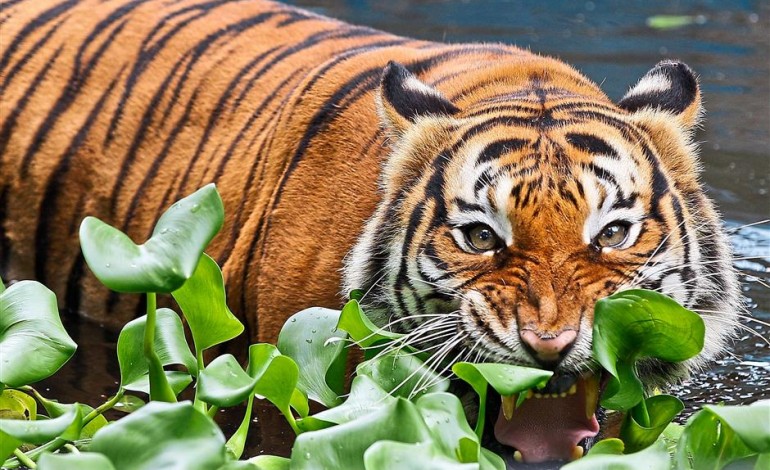LIFESTYLE
Critically Endangered: 3 Other Animal Species In Malaysia That Are Facing Extinction
Recently, the news of the Sumatran Rhino officially going extinct in the wild shook not only us, but we're pretty sure everyone in Malaysia as well.
While a lot of us are saddened by the extinction of animals (other species that fall under the insects, amphibian, coral and flora categories don't get as much attention for some reason), few of us actually know or care about the impact it has on biodiversity, the earth and consequently, us.
Long story short, the extinction of wildlife will lead to the health of our jungles being affected (not to mention logging and illegal development are already destroying 'em), which will mean that we won't have enough water catchment areas, which will eventually lead to a water crisis.
And by eventually, we don't mean 50 years down the line. We mean in the next few years.
What we've mentioned is only one of the many consequences, of course. There's much more but it'll take a few textbooks, rather than articles, to explain them all.
We'll get to it eventually. Probably.
Here's a look at some of the animals that are going to be extinct soon if we don't do something about it.
While a lot of us are saddened by the extinction of animals (other species that fall under the insects, amphibian, coral and flora categories don't get as much attention for some reason), few of us actually know or care about the impact it has on biodiversity, the earth and consequently, us.
Long story short, the extinction of wildlife will lead to the health of our jungles being affected (not to mention logging and illegal development are already destroying 'em), which will mean that we won't have enough water catchment areas, which will eventually lead to a water crisis.
And by eventually, we don't mean 50 years down the line. We mean in the next few years.
What we've mentioned is only one of the many consequences, of course. There's much more but it'll take a few textbooks, rather than articles, to explain them all.
We'll get to it eventually. Probably.
Here's a look at some of the animals that are going to be extinct soon if we don't do something about it.
#1 Malayan Tiger

There are only about 250 tigers left in the wild in Malaysia, therefore, they are categorised as critically endangered.
Without intervention, the future generation would not even know what our national animal looks like, except in textbooks. That will be a shame, right?
But all is not lost, though. The tiger population around the world, especially in countries like India, Russia, Nepal, Bangladesh and Bhutan, has increased in the past few years.
All we have to do is take a look at what they have done to help the survivability of the animal and try to replicate the efforts to save our very own Malayan tigers.
#2 Malayan Tapir

For an animal species that has survived for over 20 million years, to face extinction after all this time, there are no words to describe how devastating it would be.
The Malayan Tapir, like the Malayan Tiger, has been listed as an endangered species, with less than 3,000 left in the wild.
Due to rapid development, tapirs are losing their habitat. They also often end up becoming roadkill as roads often create a break in their living areas, forcing them to cross dangerous highways.
#3 Pygmy elephants

A native to Borneo, this species of elephant is the smallest in the world, but plays just an important part in the ecosystem.
Unfortunately, their tusks are still very much in demand (what kind of monsters buy ivory still?) making them a popular target among poachers.
Destruction of their natural habitat for development doesn't help either. Currently, there are only approximately 1,500 pygmy elephants left in the wild, so they too are critically endangered.
What can we do?
Honestly, the fact that these animals and more are endangered is not a new information to most of us, but what can we - as individual and a society - do to help reverse this situation?
Reduce carbon footprint

Little changes in your daily life goes a long way, especially when the little steps are taken by many people.
Cut down on your meat intake, eat more locally produced food, walk more, drive less, use public transportation more often, use biodegradable products, shop less...the list goes on.
We guess we can summarise it to be more conscious of your choices when you consume - be it food or other items you use daily.
Read up!
.gif)
The internet is a wonderful thing when used correctly. Read up on endangered species in your area, the consequences of its extinction and spread the awareness to family and friends.
The more people understand, the more will care and act.
Reduce plastic usage

There's not much point in saying no to straws if the drink that you're buying still comes in plastic cups placed in another piece of plastic.
Bring your own containers for food and drinks whenever possible, carry a reusable bag with you and if you do have to use products made of plastic (it's quite inevitable sometimes, really), find a proper way to recycle or dispose of it.
Volunteer

A simple google search will give you plenty of volunteer options in the jungles and with animals.
From working directly with endangered species to protecting the forests, there are many type of volunteer work out there.
Choose one that suits your interest as well as your skills, and spend some time contributing to the efforts of organisations such as World Wildlife Fund (WWF) and Raleigh Borneo.
Put pressure on your elected representatives

Governments, obviously, play a huge part in creating public policies, managing natural resources and such.
Use social media and the internet to put pressure on the elected representatives to take proactive steps to conserve nature and limit development.
Sign petitions, write letter, go to the streets if it comes to that; make your voices heard.
We're in this together

It can be difficult to find the balance between comfort and not killing the planet.
But, if we don't individually and collectively change the way we treat Mother Earth, we (and the generations to come) are the ones who will have to live with the results.
The kind of earth that we live in and leave behind is entirely up to you and every other person living on this planet.